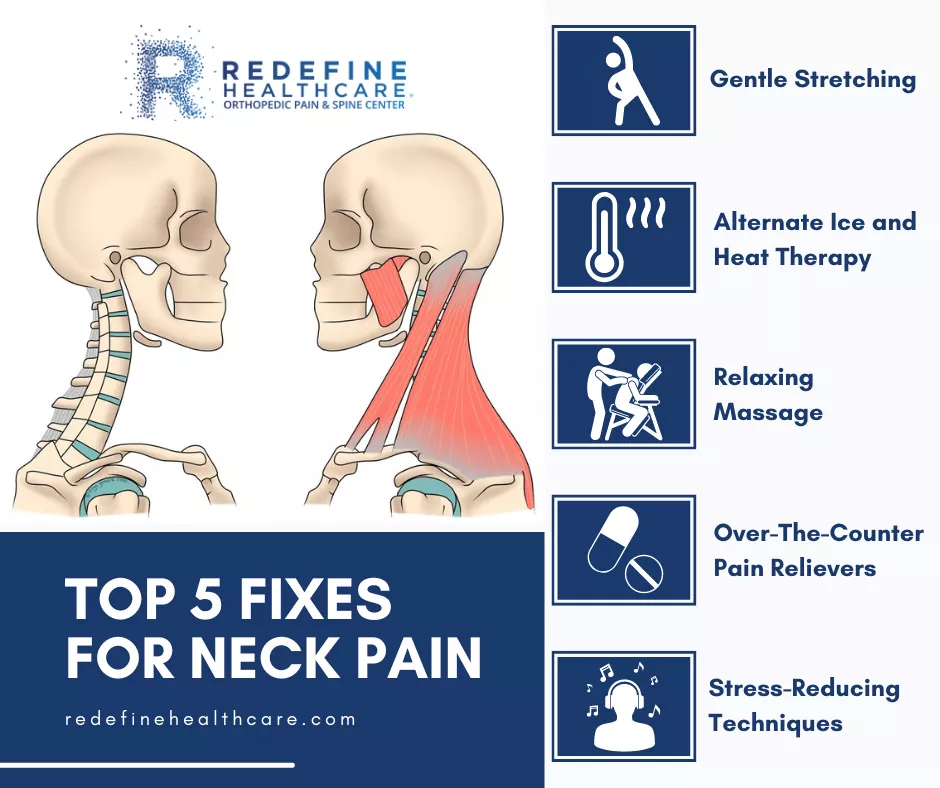
Cervical pain, often caused by muscle strain, poor posture, or underlying conditions like herniated discs or osteoarthritis, can be incredibly uncomfortable. Fortunately, one of the most effective ways to manage and alleviate this pain is through heat and cold therapy. These treatments offer immediate relief and help improve mobility. Let’s explore how heat and cold therapy can be used to relieve cervical pain, with tips on when and how to use each technique effectively.
Understanding Heat Therapy for Neck Pain
Heat therapy is one of the most popular and effective methods to ease neck pain. Applying heat helps increase blood circulation to the area, relax muscles, and alleviate stiffness. Here’s how it works and the best ways to apply it:
How Heat Therapy Works:
- Increases blood flow: Heat stimulates circulation, which helps deliver more oxygen and nutrients to the affected muscles and tissues, promoting healing.
- Relaxes muscles: Heat helps soothe muscle tension, which is a common cause of neck pain. This relaxation can reduce spasms and stiffness.
- Improves flexibility: Warmth can loosen stiff joints, making it easier to move the neck and improve range of motion.
Best Heat Therapy Techniques for Cervical Pain:
- Warm Compress: Use a heating pad or a warm towel and apply it to the neck for 15-20 minutes. Make sure the heat is not too intense, as excessive heat can cause burns or skin irritation.
- Hot Shower or Bath: Stepping into a warm shower can help relax the neck and shoulder muscles. The gentle heat and steam will ease muscle tension.
- Gel or Microwaveable Heat Packs: These can be placed directly on the painful area. Be sure to follow the manufacturer’s instructions to avoid overheating.
When to Use Heat Therapy:
Heat therapy is most effective for chronic neck pain or stiff muscles. If your cervical pain is caused by muscle tension or stress, heat will help soothe and relax the muscles. It’s ideal for use after the acute pain stage has passed (typically after the first 48 hours) or for ongoing discomfort from a long-term condition.
Understanding Cold Therapy for Cervical Pain
Cold therapy, also known as cryotherapy, works differently than heat therapy. It is most beneficial for inflammation, swelling, and acute pain. Cold therapy helps numb the painful area, reduces swelling, and slows down nerve activity.
How Cold Therapy Works:
- Reduces inflammation: Cold therapy constricts blood vessels, reducing the flow of fluid to the area and minimizing swelling and inflammation.
- Numbs pain: The cold sensation numbs the area, which can temporarily relieve pain and make it easier to move.
- Slows nerve activity: Cold packs can reduce nerve activity in the affected area, which may lessen the feeling of pain.
Best Cold Therapy Techniques for Cervical Pain:
- Cold Compress: Wrap ice in a thin towel or use a store-bought cold pack. Apply it to your neck for about 15-20 minutes. Never apply ice directly to the skin, as it can cause frostbite.
- Frozen Gel Packs: These can provide a more uniform cooling effect and are easy to mold to the neck area. Some are even designed to stay flexible when frozen.
- Ice Massage: Fill a paper cup with water, freeze it, and then remove the top of the cup to expose the ice. Gently massage the ice on the painful area of the neck for 5-10 minutes.
When to Use Cold Therapy:
Cold therapy is most beneficial for acute cervical pain, such as pain caused by a recent injury or a flare-up of a long-standing condition like a herniated disc. It is especially useful within the first 48 hours after the pain begins to reduce swelling and prevent further inflammation.
When to Use Heat vs. Cold Therapy
Both heat and cold therapy can be highly effective for cervical pain, but knowing when to use each technique is crucial for getting the best results.
- Use Cold Therapy:
- Within the first 48 hours after a neck injury or sudden flare-up
- When there is noticeable swelling or inflammation
- For sharp, acute pain or stiffness from a specific injury
- Use Heat Therapy:
- After the initial 48 hours have passed (when swelling is no longer present)
- For chronic neck pain, tension, or muscle stiffness
- To relieve ongoing discomfort from stress or poor posture
Combining Heat and Cold Therapy
In some cases, alternating between heat and cold therapy can provide the most effective relief. This combination can offer the pain-numbing benefits of cold, followed by the soothing relaxation provided by heat.
How to Alternate:
- Apply cold therapy for 15-20 minutes to reduce inflammation.
- After 1-2 hours, apply heat therapy for 15-20 minutes to relax muscles and improve blood flow.
- Repeat the cycle as necessary, ensuring you don’t use either therapy for more than 20 minutes at a time to avoid skin damage.
Conclusion
Heat and cold therapy are two of the most effective and natural ways to manage cervical pain. By understanding how each therapy works and when to use it, you can tailor your treatment to your specific needs. Whether you’re dealing with chronic tension, acute inflammation, or a recent neck injury, these therapies can offer significant relief and help you get back to your daily routine. Remember to consult with a healthcare provider if your neck pain persists or worsens to ensure proper diagnosis and treatment.

